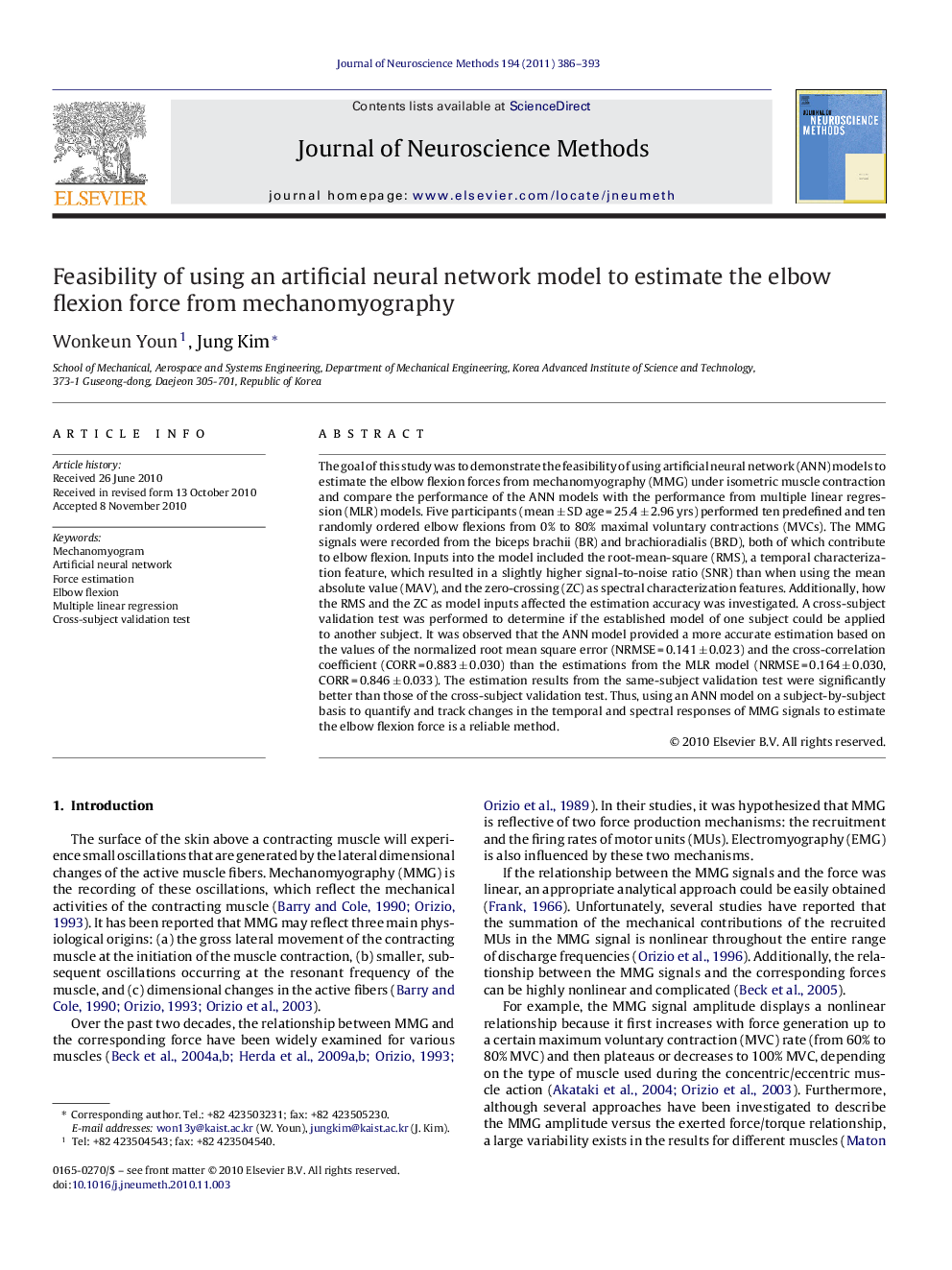| کد مقاله | کد نشریه | سال انتشار | مقاله انگلیسی | نسخه تمام متن |
|---|---|---|---|---|
| 6269894 | 1295162 | 2011 | 8 صفحه PDF | دانلود رایگان |

The goal of this study was to demonstrate the feasibility of using artificial neural network (ANN) models to estimate the elbow flexion forces from mechanomyography (MMG) under isometric muscle contraction and compare the performance of the ANN models with the performance from multiple linear regression (MLR) models. Five participants (mean ± SD age = 25.4 ± 2.96 yrs) performed ten predefined and ten randomly ordered elbow flexions from 0% to 80% maximal voluntary contractions (MVCs). The MMG signals were recorded from the biceps brachii (BR) and brachioradialis (BRD), both of which contribute to elbow flexion. Inputs into the model included the root-mean-square (RMS), a temporal characterization feature, which resulted in a slightly higher signal-to-noise ratio (SNR) than when using the mean absolute value (MAV), and the zero-crossing (ZC) as spectral characterization features. Additionally, how the RMS and the ZC as model inputs affected the estimation accuracy was investigated. A cross-subject validation test was performed to determine if the established model of one subject could be applied to another subject. It was observed that the ANN model provided a more accurate estimation based on the values of the normalized root mean square error (NRMSE = 0.141 ± 0.023) and the cross-correlation coefficient (CORR = 0.883 ± 0.030) than the estimations from the MLR model (NRMSE = 0.164 ± 0.030, CORR = 0.846 ± 0.033). The estimation results from the same-subject validation test were significantly better than those of the cross-subject validation test. Thus, using an ANN model on a subject-by-subject basis to quantify and track changes in the temporal and spectral responses of MMG signals to estimate the elbow flexion force is a reliable method.
Research highlightsⶠThe ANN model may offer a reliable method for quantifying temporal and spectral response of MMG when estimating elbow flexion force. ⶠThe model should be constructed on a subject-by-subject basis. ⶠThe spectral characterizing feature of MMG can be also taken into the inputs to the model.
Journal: Journal of Neuroscience Methods - Volume 194, Issue 2, 15 January 2011, Pages 386-393